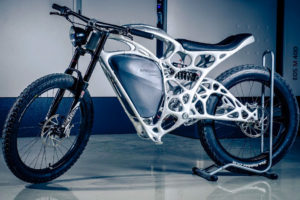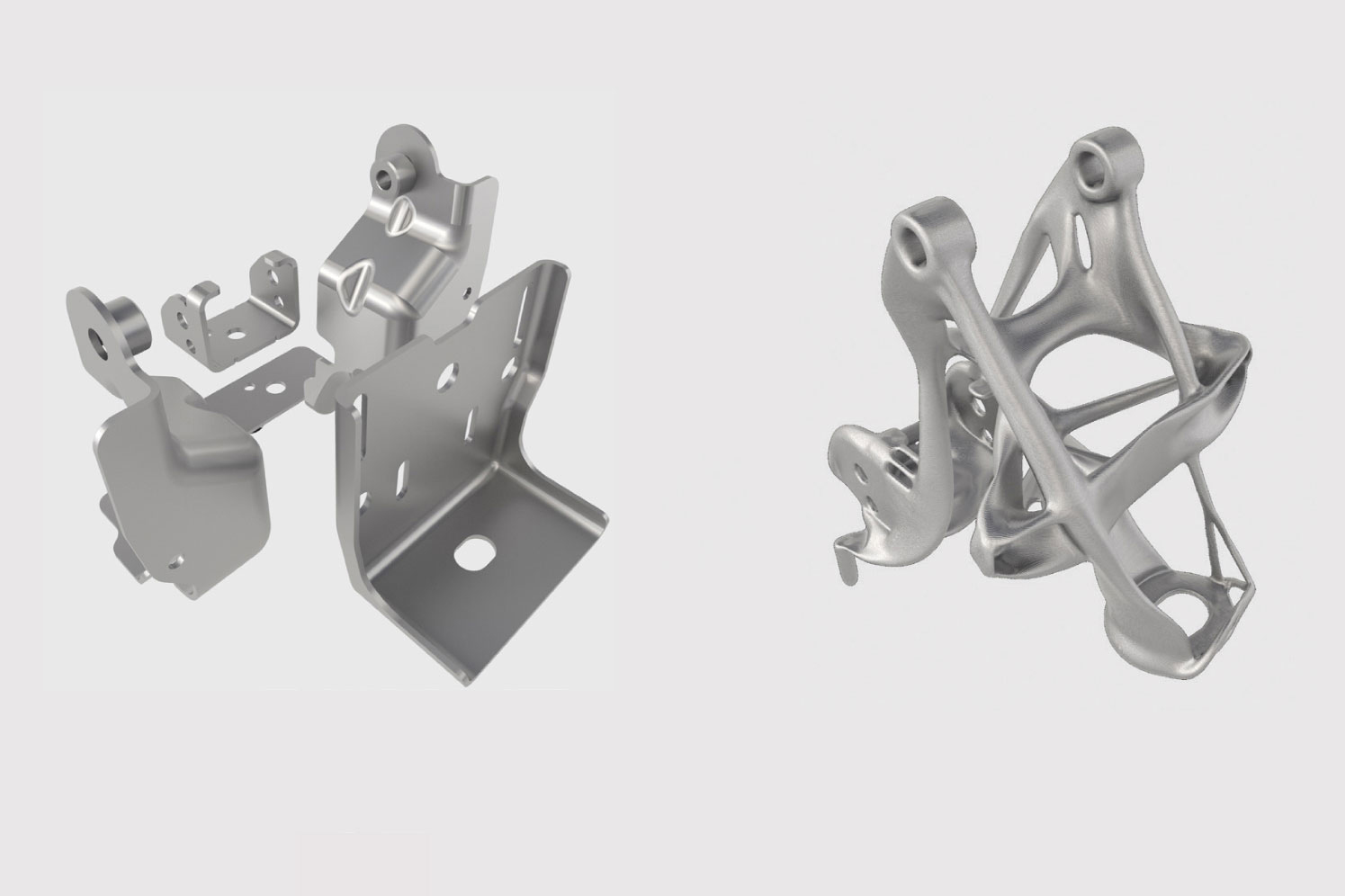
Almost every industry today is being touched by AI and product design is no exception. Over the last couple of years we have seen a number of software tools come out that have vastly amplified the design capabilities of engineers and designers.
In this new paradigm the engineer defines the requirements that should be fulfilled, whereafter the software spits out designs that are more efficient in their use of material than anything a human could have thought off. This AI assisted method for creating optimal geometries is known as generative design.
General Motors recently used generative design to create a seat bracket that according to themselves was 20% stronger, 40% lighter and reduced the number of parts from 8 to 1.

When we look at the geometries that the software deemed to be most efficient we understand that it is not something a human could have designed. The shapes remind us of nature with complex intertwining patterns that make up the larger whole.
The clash with minimalism
When we compare the results of generative design tools with today’s trend towards minimalism we find an interesting contradiction.
On one hand both nature and software seem to be telling us that these complex organic forms constitute a more efficient way of using material, on the other hand this aesthetic conflicts with minimalism which favours basic shapes. It seems that there exists a gap between the aesthetic that humans prefer and those that are physically optimal.
The Cognitively Optimal Aesthetic
My theory is that the human preference for simple shapes is a consequence of how the human brain works.

A complex shape requires more information to be represented accurately. Because of this we also have to allocate a larger part of our brain to memorize a product that has the organic aesthetic compared to a minimalistic one.
In that way minimalistic design can be seen as the more efficient aesthetic from a cognitive perspective. While at times being inferior from a mechanical standpoint it is an aesthetic that is easier for us to think about.
In the majority of consumer products I believe low cognitive load is more important than mechanical properties. Just imagine living in a house where all objects were made up from complex patterns. It would not matter that they were sturdier and used less material– living there would be tiresome.
Generative Design of Easy-to-use Products
I do not think it is too much of a stretch to imagine that generative design tools of the future will be able to take human taste into account. Imagine something that is able to balance mechanical requirements as well as aesthetic requirements.
With the amount of data available on people’s product preferences, and the number of brilliant people working in the field, it is only a matter of time.